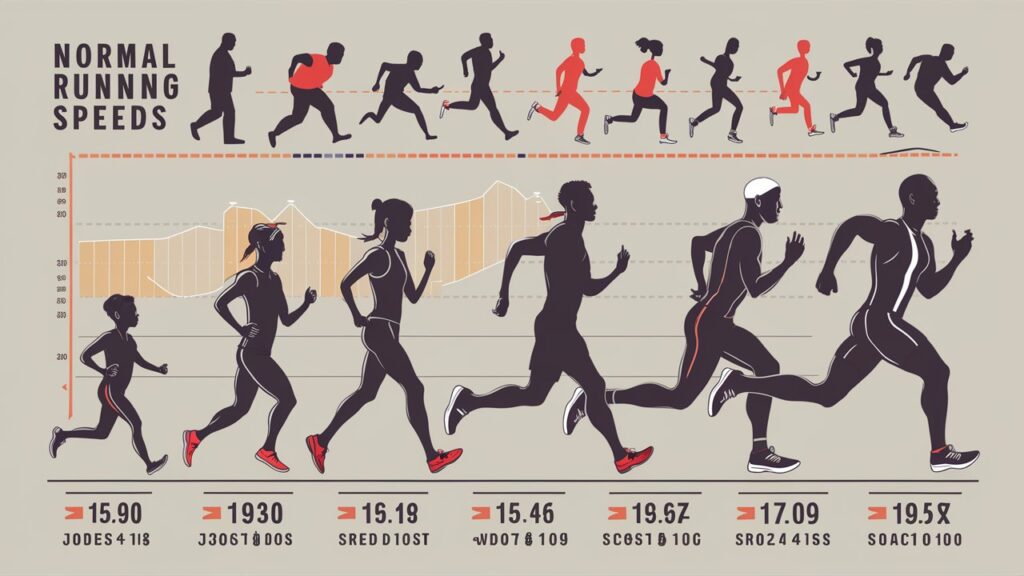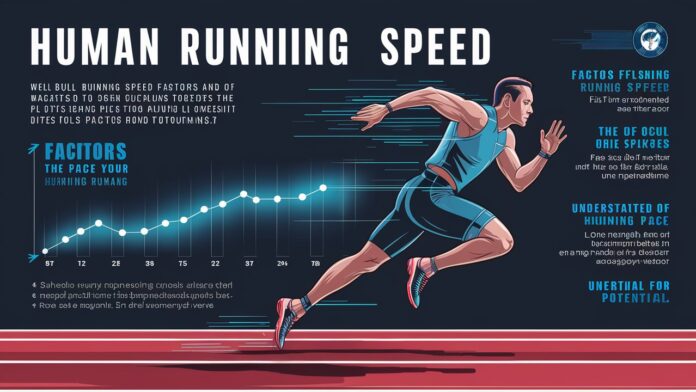Introduction
Running is a fundamental human ability, deeply rooted in our evolutionary history. While elite sprinters like Usain Bolt capture headlines with speeds exceeding 27 mph, the “normal” running speed for everyday individuals varies significantly. This article explores the science behind human running speeds, examining averages across different contexts, biological influences, training impacts, and more. Whether you’re a casual jogger or an aspiring athlete, understanding these dynamics reveals how physiology, environment, and effort converge to define our capabilities on foot.
What Defines the Average Human Running Speed?
The typical recreational runner maintains a pace between 5 to 8 miles per hour (mph), translating to 8 to 13 kilometers per hour (km/h). This range aligns with comfortable jogging or moderate-paced running, sustainable for 20–30 minutes by non-athletes. For context:
- 5 mph (8 km/h) resembles a brisk jog (12-minute mile).
- 8 mph (13 km/h) approaches a serious training pace (7:30-minute mile).
These speeds are influenced by innate factors like genetics, fitness level, and biomechanics, as well as external variables such as terrain. Unlike elite sprinters who peak at 15–20+ mph over short bursts, everyday runners operate at submaximal efforts optimized for endurance or leisure.
Key Factors Influencing Individual Running Speeds
1. Physiological Attributes
- Muscle Fiber Composition: Fast-twitch fibers enable explosive speed but fatigue quickly; slow-twitch fibers support endurance. Most people possess a balanced mix, limiting sprint potential.
- Aerobic Capacity (VO₂ max): This metric measures oxygen utilization efficiency. Higher VO₂ max correlates with sustained speed, developed through consistent training.
- Biomechanics: Stride length, cadence, and joint flexibility impact economy. Heel strikers may run slower than forefoot strikers due to braking forces.
2. Environmental and Contextual Variables
- Terrain and Gradient: Uphill routes reduce speed by 20–30%, while treadmill running often feels easier due to controlled conditions.
- Weather: Heat/humidity increase perceived effort, lowering pace; tailwinds offer marginal gains.
- Motivation: Group runs or competitive settings boost adrenaline, temporarily enhancing performance.
3. Demographic Differences
- Age: Peak speed occurs between 20–35 years. After 40, muscle mass declines by ~1% annually, slowing pace by 0.5–1% per year.
- Gender: Biological differences (e.g., testosterone-driven muscle mass) result in men averaging 10–12% faster speeds than women.
Running Speed Variations Across Distances
Human speed adapts to event duration:
- Sprints (100–400m): Untrained individuals average 10–15 mph (16–24 km/h). Elite athletes reach 20–28 mph.
- Middle Distance (800m–5k): Amateurs sustain 6–9 mph (10–14 km/h). Competitive runners target sub-5-minute miles.
- Long Distance (10k–Marathon): Casual runners hover near 5–7 mph (8–11 km/h). Boston Marathon qualifiers maintain ~8 mph for 26.2 miles.
This spectrum highlights a trade-off: neuromuscular power governs short bursts, while aerobic endurance dictates longer efforts.
Training Techniques to Enhance Running Speed
Improving pace requires strategic conditioning:
- Interval Training: Alternating high-intensity sprints (e.g., 90% effort for 400m) with recovery jogs boosts lactate threshold and efficiency.
- Strength Work: Squats and plyometrics build leg power, increasing stride force. Core exercises stabilize posture.
- Pace Drills: Tempo runs at “comfortably hard” intensity (e.g., 30 minutes at 80% max HR) teach pace sustainability.
- Recovery and Nutrition: Adequate sleep, protein intake, and hydration repair tissues and fuel adaptations.
Human vs. Animal Running Speeds: An Evolutionary Perspective
While humans peak near 28 mph, we’re outpaced by cheetahs (75 mph) and greyhounds (45 mph). Our advantage lies in endurance running:
- Persistence Hunting: Early humans tracked prey for hours, leveraging thermoregulation (sweating) and fatigue-resistant muscles.
- Modern Implications: Ultramarathon runners exemplify this legacy, covering 100+ miles at steady 5–6 mph paces impossible for faster, less efficient mammals.
Conclusion: Embracing the Spectrum of Human Speed

“Normal” running speed is not a fixed number but a dynamic interplay of biology, training, and circumstance. For most, 5–8 mph represents a sustainable, health-boosting range—far slower than Olympians yet sufficient to improve cardiovascular fitness, mental health, and longevity. By recognizing individual variability and focusing on incremental progress, runners can redefine personal “normal” and unlock their potential. Speed, after all, is relative; the true victory lies in movement itself.
Frequently Asked Questions (FAQs)
Q1: What’s the average running speed for beginners?
Beginners typically start at 4–5 mph (6.5–8 km/h), equivalent to a 12–15-minute mile. Emphasis should be on consistency, not pace, to build endurance safely.
Q2: Can anyone run faster than 15 mph?
While challenging without training, most healthy adults can briefly hit 15 mph in sprints. Sustaining it requires dedicated work on power, form, and energy systems.
Q3: How does age affect running speed?
After age 40, speed declines due to reduced muscle mass, flexibility, and aerobic capacity. However, strength training and interval workouts can mitigate losses by 1–2% per decade.
Q4: Why do I run slower outdoors than on a treadmill?
Treadmills eliminate wind resistance and propel the belt beneath you, making 6 mph feel easier than outdoor 6 mph. Adjust the incline to 1% to simulate outdoor effort.
Q5: Is speed genetic?
Genetics influence ~50% of speed potential (e.g., muscle fiber distribution, limb length). Yet, targeted training can maximize an individual’s ceiling within their biological framework.
Understanding your running speed empowers smarter goals. Celebrate progress, respect your body’s limits, and remember: every step forward is a triumph.

